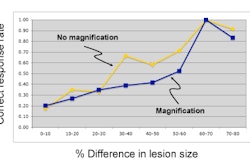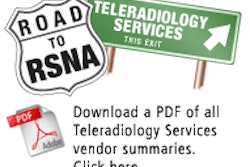A culture of solid interpersonal communication can serve as a positive contributor to a radiology department's bottom line in many ways. Be aware of the communication processes currently employed throughout your department, as it could affect the crucial metrics of report turnaround time and patient satisfaction.
Communication within the radiology department starts with order entry, which is generated by a central scheduling unit ordering a procedure for outside patients, an inpatient order on any patient currently being treated in-house, or walk-ins to the radiology department. Performed by various staff members, order entry is a form of communication and has to be handled correctly; information entered at this point will travel with the patient all the way to the reading of the study by the radiologist.
Service can quickly degrade if any of the study information is entered incorrectly. At the least, time will be lost while a staff member corrects the error in the system. At worst, the wrong study or patient can be imaged. Safety issues aside, order entry errors will result in even longer delays as information is validated and reconciled. This can also greatly diminish patient satisfaction if patients become aware of the situation.
Department workflow is driven by verbal communication between technologists and support staff, such as radiology nurses and patient transporters. Transporters have to stay in synch throughout the day so that patients will arrive when and where they need to be, while nurses have to be aware of ever-changing patient conditions to enhance patient safety throughout the department. This all occurs via verbal and written communication.
Information obtained by the technologist while talking with the patient during the procedure is still another type of communication within the department. This information, such as patient history, must then be conveyed to the radiologist to help with the diagnosis. If this information is minimal or absent, the quality of the patient's report may be diminished.
Communication will also occur with the file room. This is where staff, whether in a film- or PACS-based workflow, will receive requests to send studies out to other healthcare facilities and receive studies for patients transferring into the facility. This information has to be clear and concise to avoid delays in the continuity of care.
The final, crucial type of communication in the radiology department is managerial communication. Communication from leadership serves to direct optimal workflow, resolve issues within the department, provide radiology staff with current and pertinent information, and provide motivation to the staff.
Improving communication within your department can be accomplished by using tools that you may already have at your disposal, or committing to changing the culture within your group. Managerial communications can be improved by a commitment by the radiology department's leadership to improve the communication culture within the department.
This means being proactive in your communications, being out among the staff on a regular basis, and making a commitment to avoid using e-mail as your primary staff communication tool. Your PACS may also have some tools that you can use to close the communication gap between technologists and radiologists. Study notes or clinical exam notes are an effective way to put pertinent clinical information obtained from the patient in front of the radiologist at the time it's needed.
Communication, regardless of where it originates within the radiology department, is critical to the success of your department. Examine the communications in your area, and make a commitment to improve its flow in your department. You'll soon see the benefits.
By John Sole
AuntMinnie.com contributing writer
March 20, 2008
Mr. Sole is the PACS administrator supervisor at Swedish American Hospital in Rockford, IL. He can be reached at [email protected].
Related Reading
Using informatics to meet communication challenges, February 7, 2008
High-tech communication tools improve patient care, studies find, December 6, 2007
Developing a cost-effective image QA workflow with PACS, November 21, 2007
Copyright © 2008 AuntMinnie.com



















